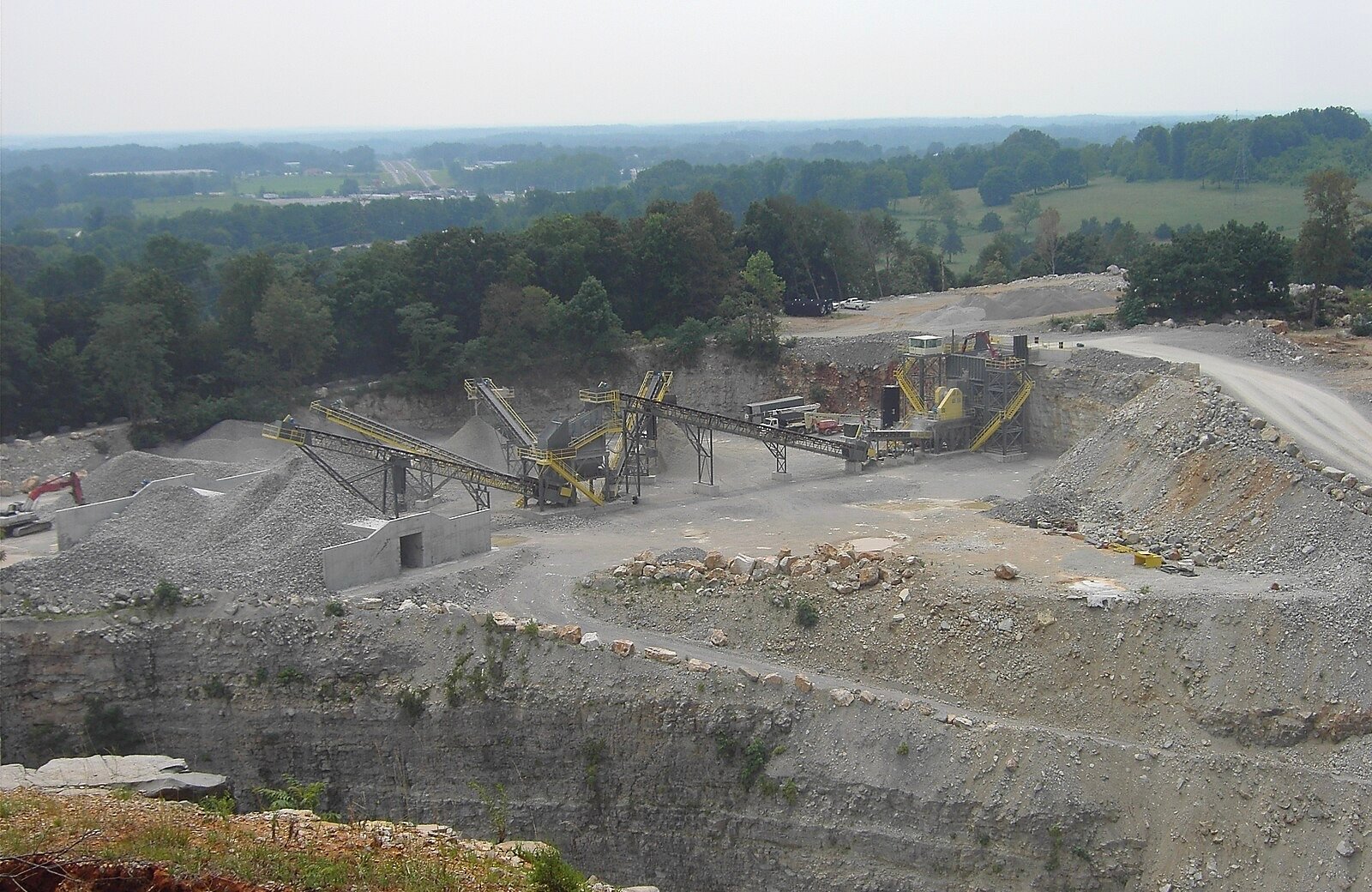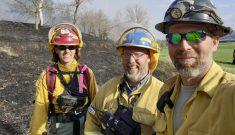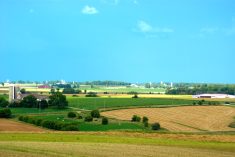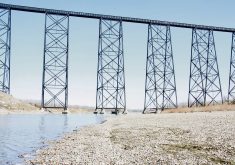The following is a narrative about an area in County Roscommon, Ireland, famed for its millennia-old farming traditions, archeological monuments, mythological inspirations – and an initiative that has been reconciles and supports the perpetuation of both.
Rathcroghan, a small area of rural County Roscommon, Ireland, has been an agricultural landscape for thousands of years.
Within 6.5 square kilometres in any direction from its centre, there are some 240 archeological monuments of varying size, dating from the medieval period to the stone age.
Read Also

Melancthon faces a new quarry fight over water, environment and farmland risks
A proposed Strada blast quarry in Melancthon, Ont., sparks regional debate over water protection, farmland sustainability, and Ontario’s aggregate policy.
The area is also the birthplace of many stories and figures of Irish myth, including Queen Medb (Maeve), The Morrigan, The Cattle Raid of Cooley, and Samhain, today known as Halloween.
Beef cattle production has been a part of this landscape throughout its history. This is thanks, in part, to soil and location that naturally fit that endeavor. Today sheep and beef cattle still comprise the bulk of agricultural activity.
Such a long and storied history brings pressures, particularly as agricultural systems intensified throughout the latter half of the 20th century.
- MORE with Matt McIntosh: Managing hedgerows in Devon, U.K. under pressure
Intensification brings degradation
As machinery and animals got heavier, or as stocking densities increased, so too did the potential damage to the area’s monuments, many of which are so old that only earthen mounds remain. To prevent further damage, the Irish government imposed regulations that restrict what Rathcroghan-area farmers are permitted to do on their land.

Now decades old, these restrictions have prevented farmers from disturbing the soil in any significant way. Construction of homes and barns, for example, or even driving new fence posts and planting trees, is prohibited in some areas.
Daniel Curley, archaeologist and manager of the Rathcroghan Visitor Centre – the community’s museum and historical programming hub – says part of the difficulty for Rathcroghan farmers was lack of clarity on what was or was not permitted. Draconian though the overarching restrictions appeared, they were afraid any farming activity could get them in trouble.
With the average farm size below 30 hectares (75 acres), Curley characterizes the position of Rathcroghan farmers as one squeezed between the costs of and drive for production, and regulations pressuring them to produce less. Some families have also encountered succession issues in which construction bans have limited where the next generation can live. Thus, well-intended conservation regulations have not stemmed trends in demographic decline and the corresponding loss of connection with a landscape central to Irish cultural heritage.
“I started at the visitor centre in 2013. It quickly became apparent to me there was a lot of disenfranchisement and barriers to progress,” says Curley.
Together with some academic friends, he called a meeting of farmers and the local county authority to “identify gaps between the groups in the room, and how we could go about improving it.”

The project
The Farming Rathcroghan project was launched near the end of 2018. It was developed by a coalition of stakeholders from within and outside the local community, including farmers, archaeologists and other environmental and agriculture industry representatives. The intention was to help area landowners diversify their farm businesses, while ensuring Rathcroghan’s vast network of monuments would remain, in better condition, for years to come.
The project is an incentive-based system offering payments to farmers who improve the condition of monuments on their land. Participants receive a scorecard assessment and recommendations on remedial action – fencing off specific areas, laying gravel pathways for livestock and field traffic, or installing strategically located and easily moveable cattle brushes to reduce scraping, for example.

The more remedial action the farmer takes, the more their score goes up, and the more financial compensation they receive.
Rathcroghan farmers are, as Curley puts it, accessing another revenue stream by “farming the archaeology” as well as their livestock.
Site assessment, on-farm extension and workshops on different conservation management techniques are also offered to support farmers in their efforts. Some 30 farmers are participating as of this writing.
The project itself has largely been supported by a small core staff – a community archaeologist, part time administrator and a full-time project manager – alongside a board of directors.
Ritchie Farrell is that project manager. A critical element in the project’s success, he says, was the immediate inclusion of farmers in the board.
“If you’re creating a board or having an operational group or committee, make sure you have farmers representative on it. Otherwise it’s considered elitist,” says Farrell.
“Even then, I’d still get the accusation ‘oh, ye boys have it all sorted out. These boys are getting the big money.’ But they’re not. Everybody is getting the same.”

Farmer inclusion and engagement is one of three pillars supporting the Rathcroghan landscape. The remaining two – academic and research engagement, as well as community engagement and storytelling – are all required for long-term preservation and agricultural production.
Farrell says the project has also found success in tying environment-related improvements into the scheme, such as hedgerow improvements and actions that better protect watercourses. This element, he says, is particularly important given Ireland and the European Union’s ever-increasing focus on biodiversity, carbon emissions and sequestration.
Project in limbo
2024 brought a state of limbo to the Farming Rathcroghan project. Originally funded through a five-year, 984,000 euros (approximately C$1.43 million) European Innovation Partnership investment from Ireland’s Department of Agriculture, Food, and the Marine in December, the project needs renewed funding.
Where that might come from remains to be seen.
“I call it a bridging phase. You need the bridging phase to finish what you’re doing, but also need that time to finish all the paperwork properly for other applications, other funding,” says Farrell.
“We’re now looking at maybe a hybrid model of funding that may be provided from the Roscommon County Council, the National Monuments Service, some from the Department of Agriculture.”
Such a model would introduce more groups to Farming Rathcroghan, and make the project less reliant on the financial whims of a single entity.
The current intention is to pitch an expanded version of the Farming Rathcroghan project, which would increase coverage area and number of farmers involved from 30 to 60, include more environmental elements and ideally, an additional full-time staff member.
Farrell says anxiety is high.
“We do need a big chunk of funding. We’re not going to do it with money in small amounts of 50,000 to 60,000 euros. We’ve budgeted for two million.”

Given progress made since the project began five years ago, Curley sees Farming Rathcroghan as a model that other conservation initiatives could mirror. He hopes potential funders will recognize the wider value the project can provide, as well as what he considers considerable local success with comparatively limited resources.
“We look at our project as a never-before-seen model in farming in archeological landscapes, allowing farmers to act as cultural custodians while still actively farming the area. The class of 2019, in a sense those 30 farmers who were involved, could start talking about higher order questions: what can we do next?” says Curley, citing pollinator support, establishment of walking trails, reintroduction of native livestock breeds, and other potential areas of additional
focus.
“Before the program, Rathcroghan was just thought of as a large monolithic space. Farmers were caught on the hamster wheel. The value of the landscape was not being realized.
“We want to allow this place to be as vibrant as it once was … This was a place central to the minds of people 2,000 years ago. It would have been in the conscious and the minds of an entire region. It deserves that recognition; it deserves people to value it.”
– Matt McIntosh is a regular Farmtario contributor and a 2024 contemporary Nuffield Canada scholar. He is investigating programs, initiatives and other efforts to help farmers re-establish or conserve ecologically and culturally significant spaces without harming farm viability. His work is sponsored by Nuffield Canada and Epp Ag Solutions.















